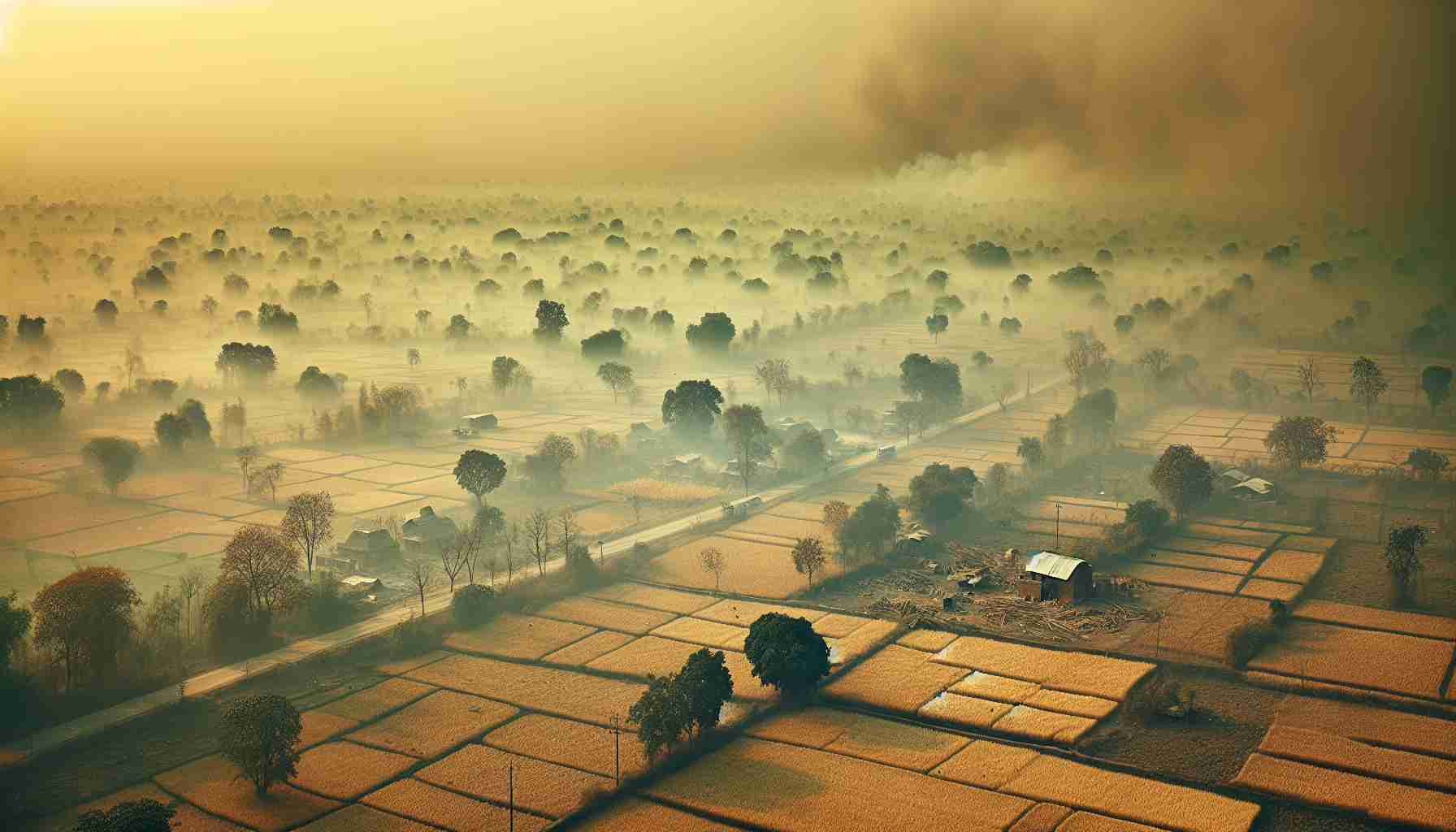
On Monday, a pervasive layer of hazardous smog descended upon northern India, notably affecting the capital, New Delhi, where air quality indices reached alarming levels. This annual occurrence typically arises during the winter months when cold air traps pollutants from various sources, including smoke from agricultural burning and particulate matter from vehicle emissions.
Visibility in New Delhi and the nearby city of Chandigarh plummeted to approximately 100 meters, prompting authorities to note some delays in flight and train operations. According to the national pollution control agency, the 24-hour air quality index (AQI) in the region registered at an astonishing 484, marking it as “severe plus,” the highest measurement recorded this year.
In a global context, New Delhi was reported as the most polluted city worldwide, with a shocking AQI of 1,081. Measurements showed that levels of fine particulate matter, which pose serious health risks, were strikingly high, exceeding the World Health Organization’s safe thresholds by over 130 times.
In response, local authorities have mandated that all schools transition to online learning and have implemented stricter regulations on construction and vehicular traffic, largely due to stagnant weather conditions. The significant pollution levels have been exacerbated by agricultural stubble burning, which accounts for a substantial portion of the air contamination.
Despite these dire conditions, many residents have continued with their daily activities, though they report discomfort and health concerns due to the worsening air quality.
Severe Air Quality Crisis Hits Northern India
The air quality crisis in northern India, particularly in New Delhi, has intensified as winter sets in, significantly impacting public health, transportation, and day-to-day life. Recent reports show not only extremely high pollution levels but also highlight underlying issues contributing to this persistent environmental challenge.
What are the primary sources of pollution in northern India?
The pollution in northern India primarily stems from a combination of vehicle emissions, industrial discharges, construction dust, and agricultural practices, notably stubble burning. A substantial factor includes household heating methods, where many residents still rely on wood and coal, releasing additional pollutants into the atmosphere.
How does air pollution affect health?
Exposure to severe air pollution can lead to a range of health issues, from respiratory diseases and cardiovascular problems to long-term conditions such as lung cancer. Vulnerable populations, including children, elderly individuals, and those with pre-existing health issues, face even greater risks.
What key challenges does the government face in addressing this crisis?
One significant challenge is the coordination of various governmental bodies at local, state, and national levels to effectively manage and mitigate pollution sources. Furthermore, there is contention between the need for agricultural practices, such as stubble burning, which farmers rely on for efficient land use, and the urgent need to improve air quality.
Are there controversies surrounding proposed solutions?
Yes, there are debates regarding the implementation of alternative agricultural practices, including mechanized harvesting and biomass management. While these methods can reduce stubble burning, they also entail costs that many farmers struggle to afford. There is also controversy over the punctuality and enforcement of pollution control regulations, which some argue is insufficient or poorly implemented.
Advantages and Disadvantages of Current Measures
The measures taken, such as transitioning schools to online classes and limiting vehicular traffic, have both advantages and disadvantages.
Advantages:
– Immediate reduction of exposure for school children and sensitive populations.
– Decreased vehicular emissions during restrictions.
– Heightened public awareness of air quality issues.
Disadvantages:
– Significant disruptions to education and daily routines.
– Economic implications for businesses affected by traffic and construction restrictions.
– Potential for long-term complacency among authorities if immediate solutions are not pursued.
What can residents do to protect themselves?
Residents are encouraged to stay indoors, use air purifiers, and wear masks when venturing outside. Awareness campaigns promoting the use of indoor plants that can improve air quality may offer some relief, albeit limited.
Conclusion
The severe air quality crisis in northern India highlights a complex interplay of environmental, health, and socio-economic factors. While immediate measures provide temporary relief, long-term solutions require comprehensive strategies involving all stakeholders, including government authorities, farmers, and the public.
For further reading about air quality and environmental challenges in India, visit Clean Air Asia for more insights and resources related to improving air quality standards and practices.



